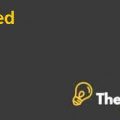
Introduction of the Article
The article titled ‘Delivering Public Service for the Future: Harnessing the Crowd’ has been authored by Tim Cooper who has been associated with the Accenture Institute of high performance as a senior research manager. The other authors for the article include Matthew Robinson, who is a part of the policy research at the same institute of Accenture as Managing Director, whereas, Henry Kippin is another author, a director at Collaborate CIC which promotes a strong relationship with private, government, and social factors through policies and research. The article has been published in Ivey Business Journal which is controlled and managed by the Ivey Business School of Western University. The credibility of the University could be referred to the number one ranking offered by the Bloomberg Businessweek which makes it the most honored Business School of the World. Since the credibility of the business journal and the business school is highly rated, the authors have as well the required expertise in venturing the article on the public services as their background reflects their credibility. However, even if the authors have a true source of expertise and knowledge, they still lack the efficiency of writing research papers as little history has been found regarding the previous work of authors in writing research papers.
The Main Idea and Concept
The main idea presented in the article reflects about a term ‘crowdsourcing’ which was offered by Jeff Howe to understand the concept of the newly implied public sector responsibilities and services offered to its general public in collaborating with its counterparts. The paper produces a broader concept of the role of the crowd in enhancing the responsibilities and increasing the overall performance of government. The paper reflects the extending the wisdom of the crowd which would result in the main source towards achieving the desired outcome by the government. As collaboration is a special technique that is being implemented in multinational corporations for many years, the authors suggest that applying the particular strategy on to the government institutes may allow them to perform better. Since the cognitive approach of the government has been highlighted by the authors, however limited practical approach has been provided which could relate the current scenario of public services and the ideas proposed with the real world examples and the approach to implement those ideas practically.
Similarly, the authors have also provided the concept of service model and reshaped existing service model through providing the linkages between the departments and across the departments. The authors propose that the government can enhance their value through integrating well with the agencies which is relevant to the inter-departments of a particular government, and through inter-governments which include integration with different government across countries. The ideas portray the harness of the crowd in improving their outcomes through inferring little cost through enhancing the resources and shared services. This idea may entice the developing nations to construct a similar model for enhancing value, however while considering the broader context of the many economies around the world, the idea may not pose the similar benefits and significance due to their crowd perception and the implementation procedures of a particular government regulations as it may not be feasible in another country.
The Purpose of the Study
The purpose of the study has aimed at shedding lights on the concept of crowdsourcing and the benefits it provides to the government in developing a perfect community. The paper develops a pattern for the reader to understand the current service model of governments and proposes a healthier service model which can meet the increasing social demands of the public and competing effectively with the many great economies of the world through collaboration and integration. The authors have highlighted the concept of government has not just remained on delivering the required service, but is it has also aimed at supporting the new culture of public entrepreneurship which allows the collaboration of public, social media, and the integration of private sectors. However, the purpose does not serve the problems and the limitations of the study for the strategies proposed by the authors. The overindulgence of the authors in providing the ways a government can enhance the value of its citizens allowed the concept of the paper to avoid the limitations and barriers a government may face while implementing the preferred model.....................
This is just a sample partial case solution. Please place the order on the website to order your own originally done case solution.













